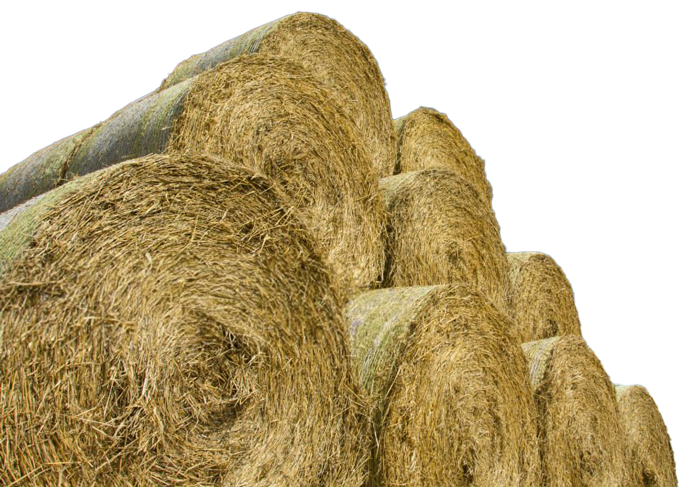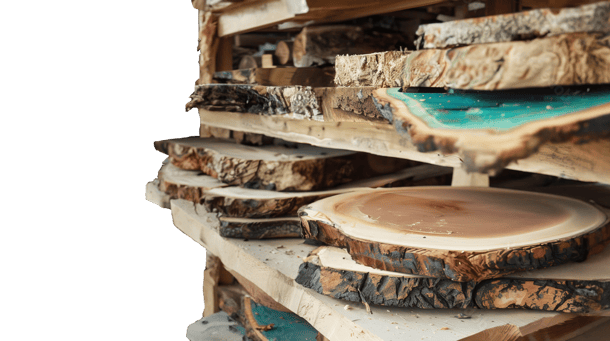Wood Species Correction Look-Up
For pin-type moisture meters that do not have wood species corrections built in, manual correction is required. Delmhorst uses Douglas Fir, the USDA standard, as the basis for all wood calibrations. Because the electrical characteristics of different species vary, all species read differently at the same moisture content.
Pin-Type Moisture Meters
*Meter readings taken with 26-E 2-pin electrode with insulated pins. Do not apply 2-pin correction.
▲ SPF correction is based on USDA/Forintek data and can be used for the following species: Lodgepole Pine, Alpine Fir, Eastern White Spruce, Black Spruce, Jack Pine
For meters that do not have temperature corrections built in, manual correction is required. As wood temperature increases, its electrical resistance decreases and indicated moisture content rises. Lower wood temperatures result in lower indicated moisture content. If the wood temperature, which is typically the ambient temperature, is between 50°F/10°C and 90°F/32°C, there is no need to apply a correction.
| Meter Readings | ||||||||||||
| C | F | 6 | 7 | 10 | 15 | 20 | 25 | 30 | 35 | 40 | 50 | 60 |
| -20 | 0 | 9 | 11 | 15 | 22 | 31 | 38 | 45 | 53 | |||
| -10 | 20 | 8 | 10 | 14 | 20 | 28 | 34 | 40 | 47 | 55 | ||
| 5 | 40 | 7 | 8 | 12 | 18 | 24 | 30 | 36 | 42 | 48 | ||
| 15 | 60 | 6 | 7 | 11 | 16 | 21 | 27 | 32 | 38 | 43 | 54 | |
| 30 | 80 | 6 | 7 | 9 | 14 | 19 | 23 | 28 | 33 | 38 | 47 | 55 |
| 40 | 100 | 5 | 6 | 8 | 12 | 17 | 21 | 25 | 29 | 34 | 42 | 50 |
| 50 | 120 | 5 | 5 | 7 | 11 | 15 | 19 | 22 | 26 | 30 | 38 | 44 |
| 60 | 140 | 4 | 5 | 7 | 10 | 14 | 17 | 20 | 23 | 27 | 34 | 40 |
| 70 | 160 | 4 | 4 | 6 | 9 | 12 | 15 | 18 | 21 | 24 | 30 | 36 |
| 80 | 180 | 3 | 4 | 5 | 8 | 11 | 13 | 16 | 19 | 22 | 27 | 33 |
| 95 | 200 | 3 | 4 | 5 | 7 | 10 | 12 | 14 | 17 | 19 | 24 | 28 |
| 105 | 220 | 2 | 3 | 4 | 6 | 9 | 11 | 13 | 15 | 17 | 21 | 26 |
|
Moisture Content values shown in Bold are only qualitative since they are above fiber saturation point (30%MC). |
||||||||||||
For meters that do not have pin corrections built in, manual correction is required. The default calibration on our pin meters was made with non-insulated pins that penetrate 5/16 inch. Since insulated pins read slightly lower than noninsulated ones, refer to this correction table when using an electrode with insulated pins, such as the 26-ES.
| meter readings with insulated pins (26-es electrode) | |||||||||
| 7 | 8 | 10 | 12 | 14 | 16 | 18 | 20 | 22 | 24 |
| Corrected readings (true indicated moisture content) | |||||||||
| 7.3 | 8.4 | 10.6 | 12.8 | 14.9 | 17.0 | 19.2 | 21.4 | 23.7 | 26.0 |
Measurements obtained with pinless (capacitance type) moisture meters such as TechScan are greatly influenced by the specific gravity of the wood. Wood with higher specific gravity produces higher moisture readings than materials with lower specific gravity at the same moisture content. Since TechScan is calibrated for wood at a specific gravity (SG) of 0.46, a correction is required when measuring wood species with SG values other than 0.46. To correct meter readings to actual moisture content, enter the meter reading and the wood’s specific gravity in the Specific Gravity Correction Tool and the corrected %MC will be calculated in the right column. Refer to the owner’s manual for more information on SG corrections, or, refer to these online resources:
- http://www.wood-database.com
- http://www.woodworkerssource.
com - https://www.woodweb.com/Resources/wood_eng_handbook/wood_handbook_fpl_2010.pdf
NOTE: SG VALUES ARE BASED ON GREEN VOLUME AND OVEN-DRY WEIGHT.
Specific Gravity Correction Tool
0.0
| Species Name | Botanical Name | SG |
|---|---|---|
| african ebony | Diospyros crassiflora | 0.78 |
| african mahogany | 0.42 | |
| alder | Alnus glutinosa | 0.37 |
| american elm | 0.46 | |
| aspen | Populus tremula | 0.36 |
| basswood | Tilia glabra | 0.32 |
| beech american | Fagus grandifolia | 0.56 |
| beech euro | Fagus sylvestris | 0.53 |
| birch | Betula alba | 0.55 |
| black gum | Nyssa sylvatica | 0.64 |
| black walnut | Juglans nigra | 0.51 |
| bubinga | Guibourtia spp | 0.71 |
| call | ||
| cherry black | Prunus serotina | 0.47 |
| cherry brazilian | Hymenea courbaril | 0.64 |
| cottonwood black | Populus strichocarpa | 0.31 |
| cypress | ||
| douglas fir | Pseudotsuga menziesii | 0.45 |
| eastern hemlock | Tsuga canadensis | 0.36 |
| eastern red cedar | 0.44 | |
| hickory | Carya ovata | 0.64 |
| hondruas mahogany | Swietenia spp | 0.45 |
| incense cedar | Libocedrus decurrens | 0.35 |
| jatoba | Hymenea courbaril | 0.77 |
| keruing | Dipterocarpus spp | 0.69 |
| larch euro | Larix decidua | 0.45 |
| larch western | Larix occidentalis | 0.48 |
| longleaf pine | Pinus palustris | 0.54 |
| magnolia | Magnolia grandiflora | 0.46 |
| maple hard | Acer saccharum | 0.56 |
| maple red soft | Acer rubrum | 0.44 |
| maple silver soft | Acer saccharinum | 0.49 |
| meranti | Shorea spp | 0.46 |
| oak red | Quercus spp | 0.56 |
| oak white | Quercus spp | 0.6 |
| oregon myrtle | Umbellularia californica | 0.51 |
| pecan | Carya illinoinensis | 0.6 |
| philippine mahogany | Liriodendron tulipifera | |
| poplar | Liriodendron tulipifera | 0.4 |
| purpleheart | Peltogyne spp | 0.67 |
| ramin | Gonystylus spp | 0.52 |
| red fir | Abies magnifica | 0.65 |
| redwood | Sequoia sempirvirous | 0.36 |
| shortleaf pine | Pinus echinata | 0.47 |
| spanish cedar | Cedrela spp | 0.41 |
| spf | ||
| sugar pine | Pinus lambertiana | 0.34 |
| tasmanian myrtle | Nothophagus spp | 0.5 |
| teak | 0.55 | |
| tupelo | Nyssa sylvatica | 0.64 |
| western hemlock | Tsuga heterophylla | 0.42 |
| western red cedar | Thuja plicata | 0.31 |
| white ash | Fraxinus americana | 0.55 |
| white pine | Pinus strobus | 0.36 |
| yellow poplar | Liriodendron tulipifera | 0.4 |

Join Our Newsletter
Subscribe to our email list
